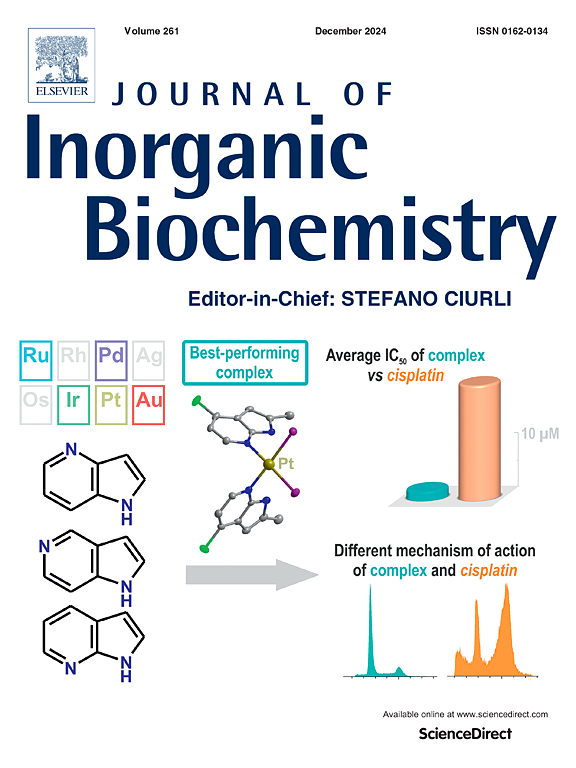链霉菌 c-di-GMP 代谢酶 CdgA 的血红素依赖性活性
IF 3.2
2区 化学
Q2 BIOCHEMISTRY & MOLECULAR BIOLOGY
引用次数: 0
摘要
链霉菌对生产抗生素等天然产物至关重要,c-二gmp在调节分化等过程中起着关键作用。c-二gmp的代谢受二胍酸环化酶(DGCs)和磷酸二酯酶(PDEs)控制,它们分别合成和水解c-二gmp,以调节细胞水平。为了提高我们对链霉菌中c-di- gmp调控过程的理解,我们对来自加纳链霉菌的c-di- gmp代谢酶CdgA进行了表征,该酶含有二胍酸环化酶和磷酸二酯酶结构域。我们的研究表明,该酶以不含血红素的形式纯化,仅能降解c-二gmp。当与血红素重组时,它可以合成c-二gmp,并且根据氧化还原状态改变合成速率。据我们所知,这是链霉菌中首次报道的c-di-GMP代谢酶的血红素依赖活性,对了解c-di-GMP在链霉菌体内代谢的方式具有重要意义。本文章由计算机程序翻译,如有差异,请以英文原文为准。

Heme dependent activity of the Streptomyces c-di-GMP-metabolizing enzyme CdgA
Streptomyces species are vital for producing natural products like antibiotics, with c-di-GMP playing a key role in regulating processes such as differentiation. C-di-GMP metabolism is controlled by diguanylate cyclases (DGCs) and phosphodiesterases (PDEs), which synthesize and hydrolyze c-di-GMP, respectively, to modulate cellular levels. To improve our understanding of c-di-GMP-regulated processes in Streptomyces, we have characterized a c-di-GMP-metabolizing enzyme CdgA from Streptomyces ghanaensis that contains both a diguanylate cyclase and a phosphodiesterase domain. Our studies demonstrate that the enzyme is purified in a form without heme and is only able to degrade c-di-GMP. When reconstituted with heme, it enables c-di-GMP synthesis, and depending on the redox state the synthesis rate is changed. To our knowledge, this is the first heme-dependent activity reported for a c-di-GMP-metabolizing enzyme in Streptomyces and has major implications for understanding the way c-di-GMP is metabolized in vivo in Streptomyces.
求助全文
通过发布文献求助,成功后即可免费获取论文全文。
去求助
来源期刊

Journal of Inorganic Biochemistry
生物-生化与分子生物学
CiteScore
7.00
自引率
10.30%
发文量
336
审稿时长
41 days
期刊介绍:
The Journal of Inorganic Biochemistry is an established international forum for research in all aspects of Biological Inorganic Chemistry. Original papers of a high scientific level are published in the form of Articles (full length papers), Short Communications, Focused Reviews and Bioinorganic Methods. Topics include: the chemistry, structure and function of metalloenzymes; the interaction of inorganic ions and molecules with proteins and nucleic acids; the synthesis and properties of coordination complexes of biological interest including both structural and functional model systems; the function of metal- containing systems in the regulation of gene expression; the role of metals in medicine; the application of spectroscopic methods to determine the structure of metallobiomolecules; the preparation and characterization of metal-based biomaterials; and related systems. The emphasis of the Journal is on the structure and mechanism of action of metallobiomolecules.
 求助内容:
求助内容: 应助结果提醒方式:
应助结果提醒方式:


